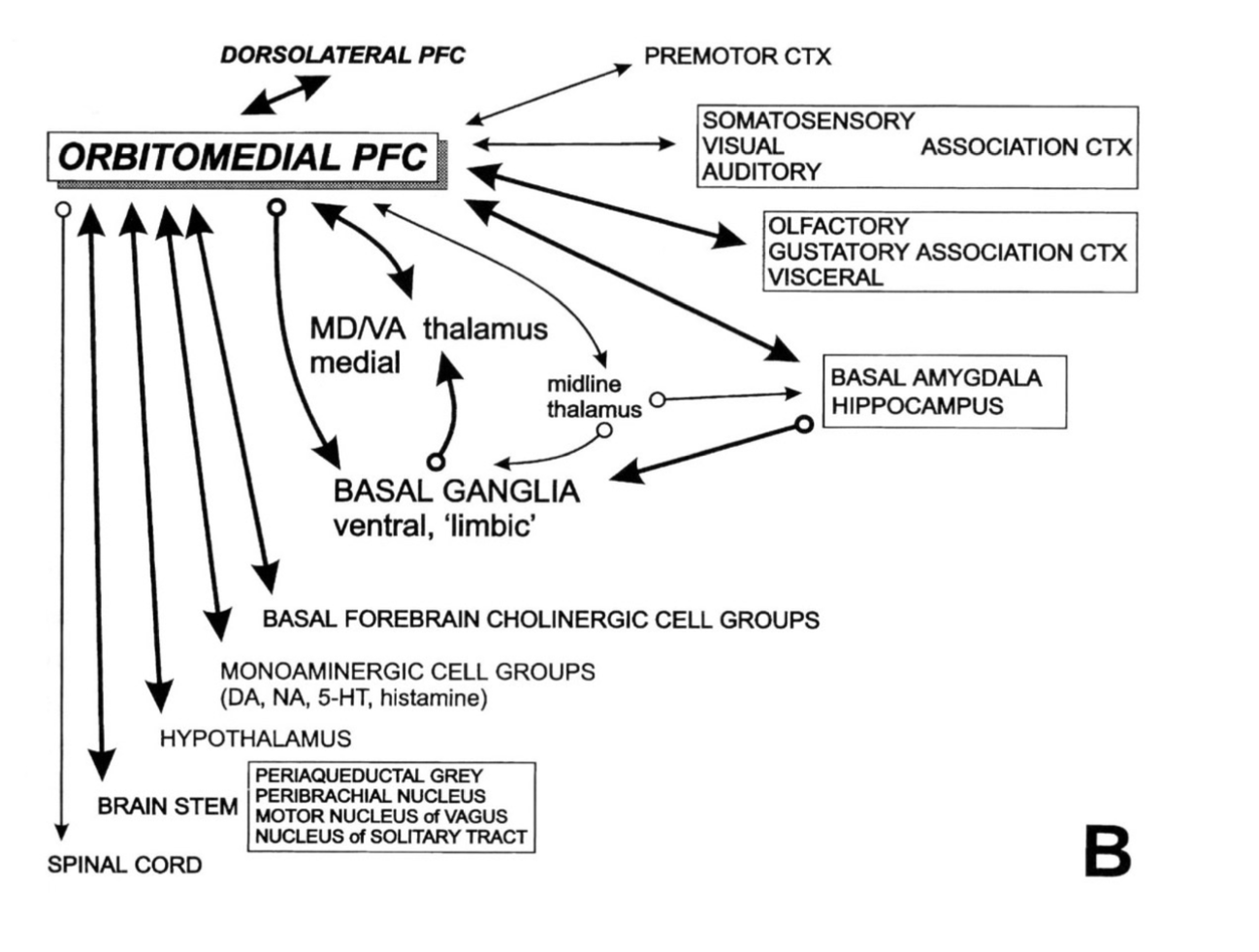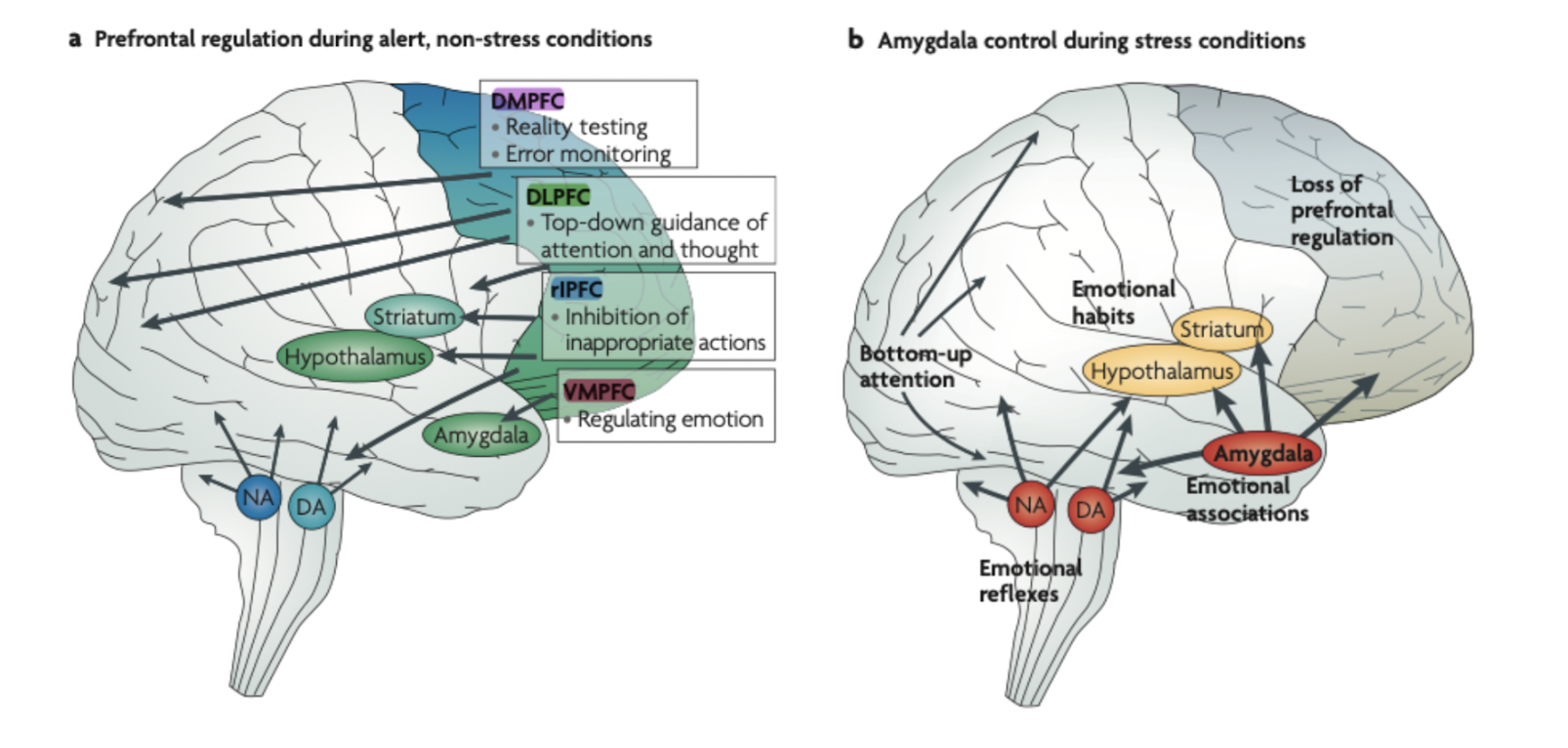Inspiring Brain🧠
Cognitive Neuroscience's Perspective

Inspired by Prof.Chiba from Cognitive Science Department at UCSD:
In cognitive neuroscience, the brain paints a story about "all the area, all the functions, all the state, all at once".
Never a Control, Rather a Balance
For so long people have trying to pose an "engineering system" perspective on the brain and on biology, which simply may not be true.

OPFC (Borrowed from Prof.Chiba's Cogs107C Slides)
Appropriate balance between excitation and inhibition is a basic principal of brain functions and stable cognitions. Looking at the anatomy, you would be shocked by the intricate circuit our brain has: "processing everything in all places to support all functions and all at once in parrallel". The brain is so much more than just areas connecting together, it is a compelx, in parralel and recurrent circuit (no area is responsible for an function and no function is limited to an area). For instance, the Prefrontal Cortex (PFC) is deemed to be a key component that supports executive functions, learning, decision making, error testing, mental sketch pad, reaprasal, representation learning, inhibition of inappropriate action. In another word, it supports so much of the important functions that makes us "intelligent". However, no functions would be carried out if the Basal Ganlia doesn't have the ability for reinforcing actions with dopaminergic cells from Ventral Tagmental Area (VTA), or if the Basal Forebrain doesn't have the cholinergic cells to desynchronize the brain areas for low tonic/high phasic optimal sensory processing (changing the dynamics of the cortex). Note that this is just examining one small circuit on the cortical level, there are so much more to talk about when we expand our scope to more subcortical areas or brain stem areas (i.e. Hypothalamus, HPA Axis, Extended Amygdala, CRH Pathway's Effect on Development & Functioning, Sensory Information Procssing Pathways, Brain-Body Connections,...).

PFC/Amygdala (Arnsten, A. F. T. (2009))
To drive home the points about the complexity of the brain, here is some "small" circuit illustration:
🧠 Some “Small" CircuitThe Bodily Brain
When thinking about the brain, we need to realize that it is not about a "neck-up" science. The brain and the body are always tightly connected is capable of powerfully influencing each other's development. The first effect may be well known, but the the reverse had been discovered recently to be true as well. I want to use the following 4 examples to demonstrate such point:
-
Bone-Neurogenisis Connections
The birth and death of neurons can be influenced by oxycalcin (a hormonal substance in the bones) that can inhibit apoptosis and promote neurogenesis.
-
Gut-Stress Connections
Gut microbiota significantly impact brain development where studies have shown that Germ-free rats exhibit increased HPA activity compared to normal rats, signaling that they are more prone to stress or CRF effects. Think about this, this sounds crazy that our stress level can be influenced by microbes in our gut. Furthermore, this change in HPA activity leads to worse spatial memory performance since a properly regulated stress response, influenced by the gut microbiota, is important for optimal cognitive function, including memory. Thus, the imbalance or absence of gut microbiota can negatively affect brain functions related to memory and learning.
-
Stress-VMPC Connections
During pregnancy, mother's body influences the fetus where increased stress in a pregnant mother leads to an decreased efficacy of the vagus nerve in the infant. If this infant does not experience sufficient opportunities to further develop this system, they may experience difficulties regulating using their parasympathetic nervous system, which may lead to an overall increase in cortisol and CRF. This can potentially lead to delayed development of the Ventromedial Prefrontal Cortex (VMPFC), which is a part of the cortex that is the key for learning and emotional regulation as it poses projection directly on teh Amygdala for inhibition. With less developed VMPFC comes with less emotion stability and decision making.
-
Stress-Allostasis Connections
Knowing the effects decribed above, the same can be said for teenager anxiety, the more anxious they are, the more CRH there would be from the HPA axis trying to regulate Homeostasis. However, the brain is not just about homeostasis, it chanegs over time and have both mechanism for feeding backward (via Locus Correculus (LC) projection onto Hypothalamus) and feeding forward (via LC projecting onto Bed Nucleus of Stria Terminails (BNST) of the Extended Amygdala through Norepinephrine (NE)). It is about Allostasis. Then there will be more CRH released from the feed forward system to "keep you going" and causes the VMPFC to be less developed, making emotion stability and learning even harder (not mentioning other down stream effect of PFC being less activated and Amygdala being more activated and support "habitual mode"). Thus, making them having more anxiety.